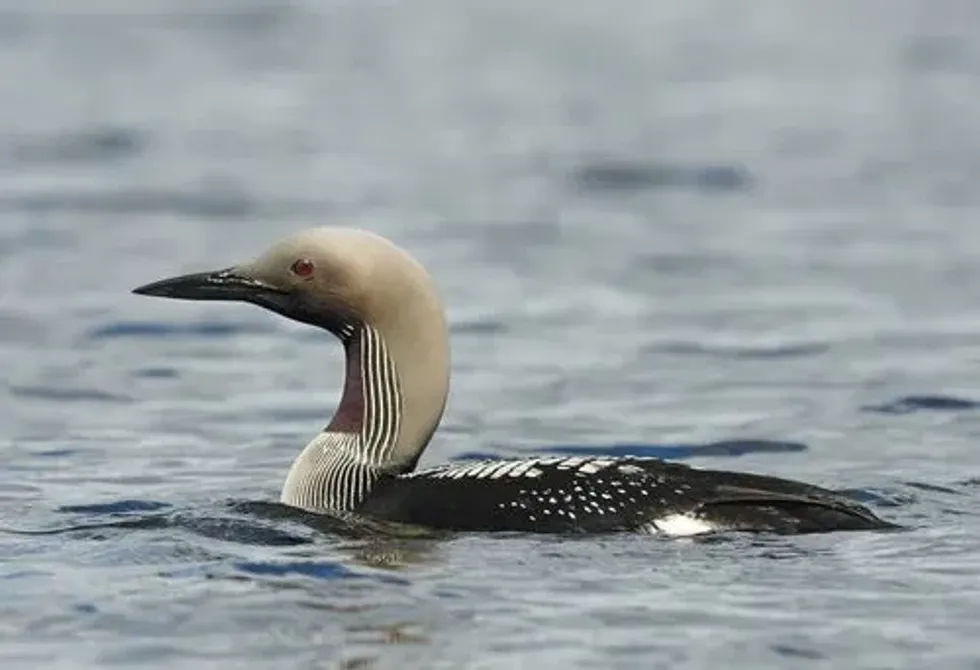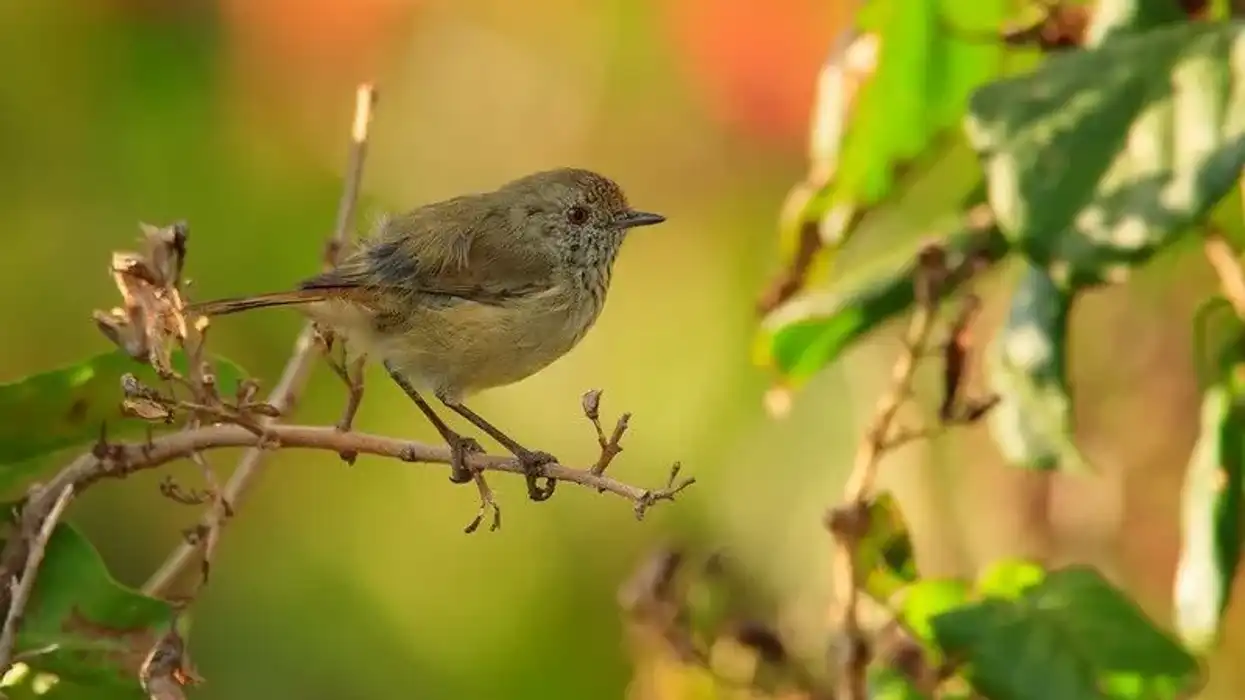The black-throated loon is one of the most interesting birds to read about. It also goes by the name of an Arctic loon or black-throated diver.
The term 'Gavia' from the scientific name of this bird, Gavia arctica, is derived from a Latin term meaning 'sea new'. This term was used by Pliny the Elder who was an ancient naturalist hailing from Rome. The second half of the scientific name, 'arctica', is the Latin term meaning 'Arctic' or 'northern'.
They were given this scientific name because black-throated loons are found mostly in the north of the globe. They can also be seen in islands and peninsulas of the Pacific region.
They are found in abundance in North America. As they are a very common bird, the status of their population is nowhere close to extinction. An adult black-throated loon increases its numbers by reproduction.
Interstate, they may often use the same nest year after year. Adults can be seen catching and feeding small fish and insects to the young ones.
Please keep reading to know more about their behaviors. For more similar content, take a look at common loon and ring-necked duck facts too.
Black-Throated Loon Interesting Facts
What type of animal is a black-throated loon?
The black-throated loon (Gavia arctica) is a type of bird.
What class of animal does a black-throated loon belong to?
The black-throated loon (Gavia arctica) belongs to the class Aves.
How many black-throated loons are there in the world?
Although the exact population of black-throated loons (Gavia arctic) remains unknown, it is known that they have a huge population that is spread across a large portion of the globe. However, their population is gradually declining.
Where does a black-throated loon live?
The black-throated loon (Gavia arctica), also known as the black-throated diver or the Arctic loon, is a resident of freshwater bodies. The range of the black-throated diver (Gavia arctica) is mainly in the Northern Hemisphere, but this differs depending on the seasons.
Their winter range is different from that of their breeding range.
During the winter or non-breeding months, the black-throated loon (Gavia arctica) can be seen in North America such as in the state of Canada and the region of Greenland, Baja California, western Alaska, and the Gulf of Alaska. They are also native to the continent of Europe including Scandinavian countries, the Mediterranean Sea, and the Baltic Sea during winter.
On the other hand, during the loon breeding season, they can be found in the European country, Sweden.
At times the black-throated diver (Gavia arctica) can also be found in the Middle East, southwest parts of Europe, India, and North Africa. However, the black-throated diver (Gavia arctica) is not native to these places.
What is a black-throated loon's habitat?
The black-throated loon (Gavia arctica) dwells mostly in freshwater lakes. These birds can also be found in huge pools, streams, or rivers. In either case, they prefer calm waters and a peaceful environment.
The black-throated loon (Gavia arctica) does not like to be disturbed by human life. Hence, it can be seen in places like peninsulas and islands where there is negligible human interference. In the non-breeding season, the black-throated loon (Gavia arctica) makes beaches with inshore water as its home.
Who do black-throated loons live with?
The black-throated loon (Gavia arctica) is known to be a solitary bird and they live on their own.
How long does a black-throated loon live?
The average lifespan of a black-throated loon (Gavia arctica) is 12 years.
How do they reproduce?
The black-throated loon (Gavia arctica) attains sexual maturity at the age of two to three years. The Arctic loon is a monogamous bird.
They only mate with one individual throughout their lives. It is only after the Arctic loon (Gavia arctica) migrates to its breeding range that it begins to breed. In the Northern Hemisphere, the Arctic loon (Gavia arctica) begins its breeding season in spring, whereas in the Southern Hemisphere, the breeding season begins in May.
After breeding, the couple builds a nest and the female Arctic loon lays one to three eggs. It takes 27 to 29 days to incubate these olive-brown, spotted eggs.
What is their conservation status?
The Arctic loon or the black-throated diver is considered to be a species with a conservation status of Least Concern by the International Union for Conservation of Nature (IUCN) Red List. It has been given this status because they are a commonly found species with a huge population.
Although the population of their species is on a decline, the black-throated diver is not facing extinction as of now due to their huge numbers.
Black-Throated Loon Fun Facts
What do black-throated loons look like?
The breeding plumage of the black-throated loon is adorned with black and white striped feathers on the back of the throat and the top of the head. The front plumage of their throat is, however, completely black.
The bellies of these birds are covered in white plumage, while the rest of their bodies have dark grayish plumage. Their winter plumage is different from this. They have an elongated throat and beak which helps them dive underwater and catch prey.
How cute are they?
The black-throated diver closely resembles the appearance of a duck, hence making them cute to look at. Their slender neck and beady eyes add to their appeal.
How do they communicate?
The main modes of communication used by black-throated divers are sound, sight, and touch. They give out a varied number of black-throated loon calls.
A feeble humming-like sound and moaning sounds are used by both genders of this species. Interestingly, males of this species possess the ability to yodel.
Such yodeling sounds, part of the black-throated loon call, are given out in territorial situations as a warning and are generally very loud and can travel as far as 6.2 mi (10 km). Male black-throated divers also display an act of moving in circles and dipping their beaks as an act of warning or when protecting their territory.
How big is a black-throated loon?
The black-throated diver or Arctic loon is 16-32 in (40–81 cm) in length. It is at least the size of a house crow and may grow even bigger.
How fast can a black-throated loon fly?
Little is known about the flight speed of the black-throated diver or Arctic loon. However, records show that these birds take flight from the water after using the water surface as a runway.
How much does a black-throated loon weigh?
A black-throated diver weighs around 2.9-7.5 lb (1.3-3.4 kg).
What are the male and female names of the species?
The male and female names of the species of Arctic loon are cock and hen, respectively.
What would you call a baby black-throated loon?
A baby black-throated diver or Arctic loon is called a chick.
What do they eat?
The primary diet of the Arctic loon or the black-throated diver is fish. They also feed on crustaceans such as shrimps and prawns. The Arctic loon also eats mollusks and insects. As the Arctic loon is omnivorous, it eats plant matter too.
Are they dangerous?
Although the Arctic loon is not generally dangerous, it can pose a threat to any life that causes disturbance to their natural habitats. In such a scenario, the Arctic loon can display signs of aggression and may even attack the intruder.
Would they make a good pet?
No, the Arctic Loon is not a good pet to have. As they feed on fish, their feces have a very repulsive odor. Moreover, in most parts of the world, these birds are illegal to possess.
Did you know...
There are five species of loon. These are the Arctic loon, the common loon, the red-throated loon, the Pacific loon, and the yellow-billed loon.
No species of the loon has an all-black coloration. The most amount of black color is seen in the black-throated loon which has a mostly black neck.
However, the backside of the neck and the head of this bird have black and white lines. Although, this is only the breeding plumage of the bird. This breeding plumage differs from the winter plumage.
How do you identify a Loon?
The feature that distinguishes loons from ducks, geese, or other similar birds is that they have different breeding plumage and non-breeding plumage. This means that the loon breeding plumage changes color when it comes to the non-breeding or winter season. Moreover, black-throated divers or any other loons are divers.
They dive deep into the water to catch their prey, unlike other birds. While flying, their bodies look elongated. These birds from the Gaviidae family, genus Gavia, can also be distinguished by their long beaks and necks.
What is the history of the Loon species?
The loon species were once considered to be the oldest birds native to the Northern Hemisphere. However, this fact was later proven wrong.
It was shown that the loon species were much more modern. Until 1930, this species was also once considered a relative of grebes and was categorized under the same family.
More recently, researchers link the loon species with penguins. The bird was considered to be more of a resident of the Southern Hemisphere as opposed to current records which show that they hail from the Northern Hemisphere.
Here at Kidadl, we have carefully created lots of interesting family-friendly animal facts for everyone to discover! Learn more about some other birds including blue-winged teal or limpkin.
You can even occupy yourself at home by drawing one on our black-throated loon coloring pages.










